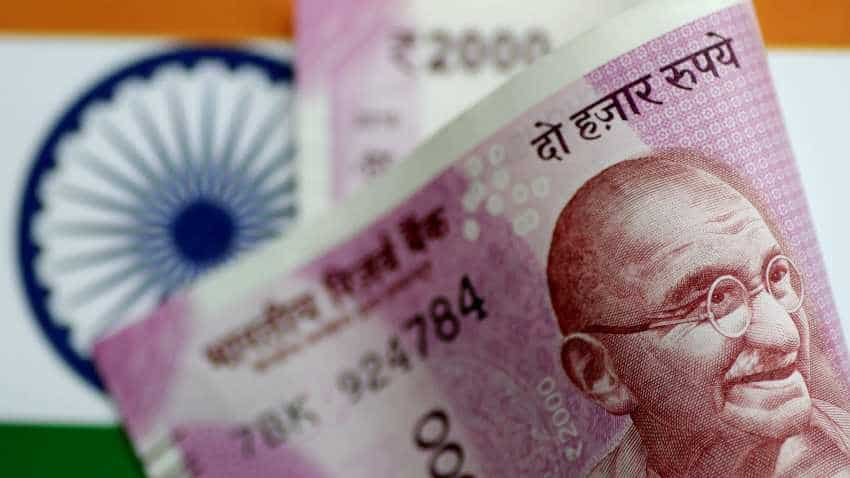US-China trade war: Top 5 perspectives on the Indian credit experience
US-China trade war: From a macro perspective, credit spreads are linked to the growth cycle and not to central bank easing.

US-China trade war: Global manufacturing and trade are experiencing a sharp slowdown. The risk being contemplated is whether this will start percolating into services. In India, apart from the sluggishness in the manufacturing sector, there is an additional problem of the slowing consumer demand. Thus, consumption was being supported by rising leverage over the past few years as income and savings growth went tepid. This may now be turning on the back of the local financing squeeze for some entities. There is possibly a behavioral component at work as well, as the consumer intentionally slows seeing lower fall back savings and an uncertain economic outlook. Additionally, the ability of fiscal policy to backstop growth is constrained owing to around 0.7 per cent GDP shortfalls in key revenue items like GST and personal income tax.
Speaking on the current status of the Indian economy and its connection with the US-China trade war Suyash Choudhary, Head – Fixed Income, IDFC AMC said, "Quite unexpectedly, US President Trump announced an intent to impose 10 per cent tariffs on a further $300 billion of Chinese imports starting September 1. These rates can be further hiked in the future. China, on its part, has responded in two ways: First, it has allowed the yuan to depreciate below the psychological 7 marks. Second, it has instructed its agencies to stop procuring US agricultural imports. These events mark a substantial incremental deterioration in the trade environment, on the back of an already slowing global economy as described above."
See Zee Business Live TV streaming below:
On what does it mean for the Indian economy Choudhary added, "It is highly likely that this new escalation invites a more dovish response from monetary policy. In particular, the US Fed had described the recent cut as a mid-cycle, insurance cut. If the new threats persist, it is quite improbable that the Fed continues to view the current cycle as such. Indeed, the 3 month to 10-year inversion on the US yield curve is back to being at its highest in this cycle: a clear indication that the markets are back to lead the Fed. Other geographies are, similarly, likely to view this as a new ultimately deflationary event (although tariffs may have a first-round inflationary impact), and according adjust monetary policy further."
Asked about the top 5 perspectives on the Indian credit experience Suyash Choudhary of IDFC AMC listed out the following:
1] From a macro perspective, credit spreads are linked to the growth cycle and not to central bank easing. So the macro logic for buying into lower-rated credits, or ‘receiving’ spreads, will only fall in place when some stability can be seen in the growth cycle. As discussed above, that doesn’t appear to be the case so far;
2] From a ‘micro’ standpoint as well, the local environment for credit is far from stable yet. Episodic resolutions of particular names help to alleviate stress to investors and are therefore obviously welcome. Most financing that is flowing through is at an asset level, rather than at a balance sheet level. This is an important distinction and needs to be clearly recognised;
3] There is a need for the framework to be neatly branded as a “RRR” model (Recognition, Resolution, Recovery);
4] There are two conditions for investing in any asset class — valuation, narrative. Each is necessary but not sufficient by its own; and
5] Ultimately, any investment decision has to be backed by a robust asset allocation framework. Our best one is to talk of fixed income allocations under three buckets of liquidity, core, and alpha.
So, if the finance minister is mulling to take any step in regard to the ongoing US-China trade war, these are the indicators that she can look at while concretising her decision.
Get Latest Business News, Stock Market Updates and Videos; Check your tax outgo through Income Tax Calculator and save money through our Personal Finance coverage. Check Business Breaking News Live on Zee Business Twitter and Facebook. Subscribe on YouTube.
RECOMMENDED STORIES
12:46 PM IST











 Chinese Premier Li Qiang warns western countries over de-risking strategy, calls it a “false proposition”
Chinese Premier Li Qiang warns western countries over de-risking strategy, calls it a “false proposition” Trump administration to study ways to protect for US investors from Chinese firms
Trump administration to study ways to protect for US investors from Chinese firms Anil Singhvi says US-China standoff to keep stock markets volatile over next four months
Anil Singhvi says US-China standoff to keep stock markets volatile over next four months Donald Trump signs US-China trade deal with a mixture of fanfare, grievance
Donald Trump signs US-China trade deal with a mixture of fanfare, grievance China to ramp up US buys under trade deal, but skeptics question targets
China to ramp up US buys under trade deal, but skeptics question targets